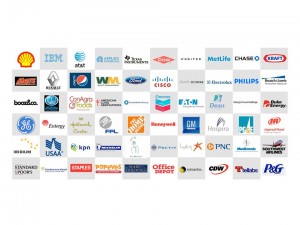 Federal Express and Ketchum, the communications firm, have benchmarked best practices in social media and brands and published their findings in Leading Brands and the Modern Social Media Landscape. Interviews with chief communications officers were conducted between August and October 2010.
Federal Express and Ketchum, the communications firm, have benchmarked best practices in social media and brands and published their findings in Leading Brands and the Modern Social Media Landscape. Interviews with chief communications officers were conducted between August and October 2010.
Four key insights were identified in the study for regulated industries, which include health care, financial services, energy, among others:
- Research the rules regarding disclosure and reporting
- Manage internal stakeholder expectations and identify internal champions from across the enterprise
- Establish a business case and ongoing management plan with Legal/Compliance teams
- In risk-averse cultures, consider focusing social media outreach on a specific theme such as Corporate Responsibility efforts.
Two additional insights in the study are particularly relevant to health/health care: the need for ongoing participation as well as strategies for crisis response via social media.
Companies across major industry segments were included in this study: health care and technology were the two largest sectors analyzed in this study, each comprising 15% of the total study sample of 62 companies (thus, some 9 companies in each of the two industry segments). Among the participating health industry players were American Lung Association, Bausch & Lomb, Hospira, and Medtronic. Other firms interviewed with large health assets included GE, Philips and P&G, among others.
Health Populi’s Hot Points: Many companies serving health and health care continue to see a half-empty glass when considering employing social media as a platform for greater engagement with health consumers. One participant in this study observed that, “We found a strong social media advocate on the Compliance team, and that made all the difference in the world in terms of selling our ideas in to leadership.”
Breaking down silos in health companies is a critical success factor for embracing social media: this endeavor is not only a roll-up-sleeves project, but requires input from multiple internal stakeholders: communications, marketing, information technology, brand/product teams, and yes, legal and regulatory. This last internal group often overwhelms the creative work of the other team members who are closer to the marketplace – physicians, consumers, caregivers, influencers. The good advice of the industry participant who found that strong social media advocate in legal is sound — and begs the question, just how many such advocates for social media are employed in highly-regulated health companies — namely pharma, biotech, and health plans?
Focusing the mirror internally, Ketchum and FedEx found that most companies have incorporated or plan to build intranets’ social networking capabilities for employees. By working with these tools for internal purposes, participants will increasingly recognize the value of socnets in productivity, creative ideation, and communication. This should have a bolstering effect on companies’ further adoption of social media and resource allocation that funds projects leveraging social media platforms.




 Thank you, Trey Rawles of @Optum, for including me on
Thank you, Trey Rawles of @Optum, for including me on  I was invited to be a Judge for the upcoming
I was invited to be a Judge for the upcoming  For the past 15 years,
For the past 15 years,